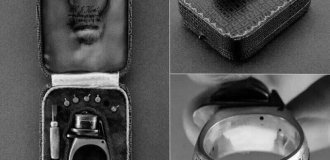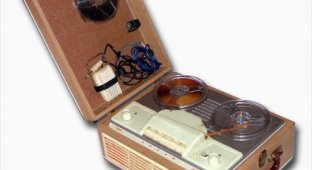Music in the USSR was a luxury and was considered a surplus. Having a cassette recorder was very cool. It was not easy to buy, nor was it cheap. For example, this beauty called the “Spring 211-1-stereo” cassette tape recorder, together with speakers, cost 365 rubles! With a regular salary of 120 rubles! Three monthly salaries for an ordinary device for playing cassettes! And some high-end reel-to-reel tape recorders could cost much more.

Secondly, a significant problem was to buy a model that would not break in the first month of operation, which happened quite often. “Soviet material is a soft thing,” said one of Platonov’s heroes, and this fully applied to Soviet tape recorders.
However, in fairness, it must be said that by the mid-80s the USSR had learned to produce quite good reel-to-reel tape recorders. They didn't break often and produced good sound. However, who in those years wanted a reel-to-reel tape recorder? They were bulky, non-transportable, and even the process of loading the film itself required a certain skill. And most importantly, by that time reels were rapidly being replaced by cassettes. In general, in adolescence, the reel-to-reel tape recorder was considered a hopeless archaism. Well, or, at least, a thing for fans of radio electronics.
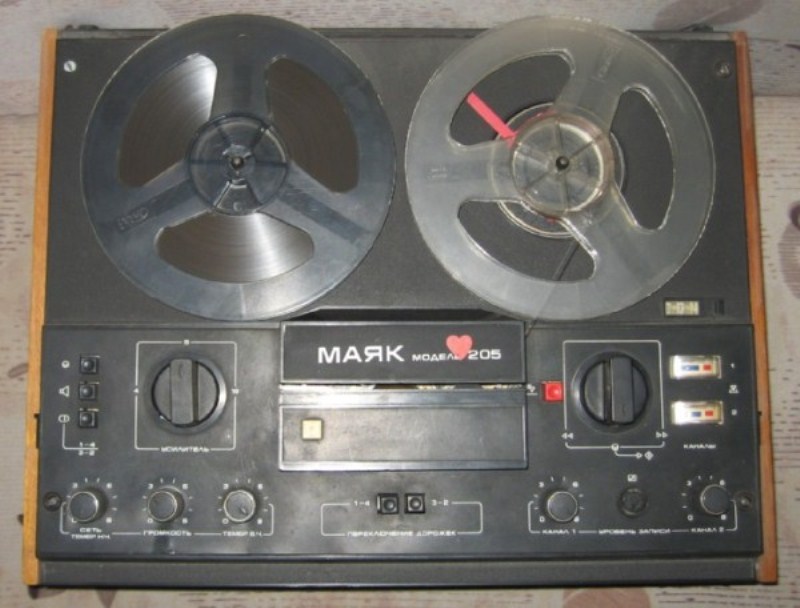
But with cassette recorders things were difficult. It’s okay that they were of a terrifying design (see the photo above - isn’t it true how elegant this Vesna “suitcase” is?). The worst thing was that they were incredibly unreliable to use. The normal operating mode of a Soviet cassette player is from one repair at a service center to the next.
This fact says a lot. Manufacturers indicated in the warranty that if in the first year of operation the product is repaired at a service center a certain number of times (either five or six), then the buyer will be able to exchange it for a new model for free. That is, the manufacturer initially assumed that his product could break five times in the first year! And many of my friends took advantage of this right - their tape recorders broke down just the right number of times.
Let me clarify that we were not talking about any minor breakdowns like a fallen off button. This little thing was fixed at home. It must be said that mechanical control buttons were probably designed by engineers specifically to occupy the consumer’s leisure time. They constantly fell out, sank, fell off, etc. Moreover, they were a very cunning design of springs, transmission levers, and pulleys. Sometimes it was amazing what engineering thought could do in an effort to complicate something simple!
Probably the champion in breakdowns were the nightmarish tape recorder/radio/record player hybrids. These bulky monsters had much more “bottlenecks” than ordinary tape recorders, and therefore brought a huge amount of trouble to their owners. But one of the more or less reliable middle-class models was the Mayak line of tape recorders.

These cassette decks cost, if I’m not mistaken, about 200-odd rubles without speakers. It would probably be wrong to say that they did not break. Of course they broke! But compared to many other models, they were, how to put it, more susceptible to repair using folk remedies - for example, kicking the body. Or a simple method worked: I took it apart, put it back together and everything works. Sometimes it was necessary to resort to more sophisticated techniques.
For example, you could often see in houses how a tape recorder stands at an angle because something was placed under its leg. It turned out that he could only work in this inclined position (the angle of inclination was calculated empirically). Or, on the contrary, the tape recorder began to work only if a heavy stack of books was loaded on top of it. But I saw the most amazing design from one friend.
He had to put a spoon under the cassette, and put a weight on the spoon to make it heavier. Only with such crutches did the tape recorder work. But nevertheless, if “Mayak” could somehow work with all these ridiculous methods, then the aforementioned “Spring” died completely and did not respond to any poultices.
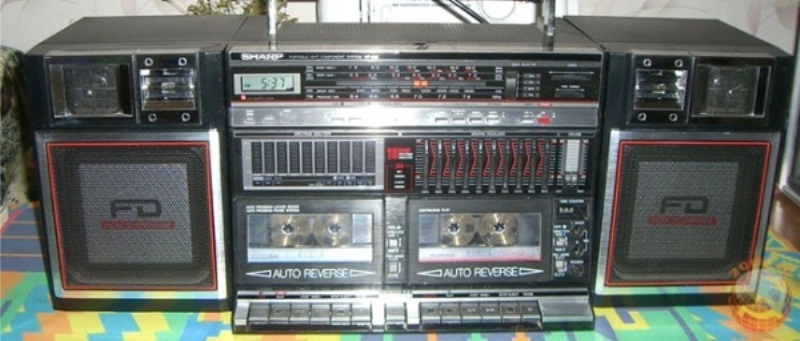
Well, the height of desire, of course, were Japanese tape recorders - Sharp, Sony, Panasonic. They stood proudly on the shelves of thrift stores, flaunting breathtaking price tags. They differed a mile from their Soviet counterparts in their eye-catching design, and most importantly, many of them were double-cassette - an extraordinary rarity for Soviet technology, which was highly valued during the years of dubbing from cassette to cassette.
By the way, Soviet cassettes were a curiosity much worse than Soviet tape recorders. It would be difficult to find a more unfortunate thing.
Oddly enough, tape cassettes were not in short supply in the USSR. This was a rare case when a product that could potentially be in short supply was sold everywhere, but at a price that excluded any hype. In any Radio Products store, the shelves were lined with imported cassettes of various brands. They all cost exactly the same, regardless of the manufacturer - nine rubles for a 90-minute cassette. The price by today's standards is, of course, completely absurd. An engineer's monthly salary of 120 rubles could be swelled with style into 13 cassettes!
However, it was possible not to show off, but to modestly buy domestically produced cassettes - four rubles apiece. But what kind of tapes were they! A song, not a cassette! If there had been a certain Cossack agent in the State Planning Committee who would have directly ordered the producers of the cassettes - “make a cassette so that by its very existence it would discredit Soviet industry” - he should have been extremely pleased with what happened. Because it turned out not even “as always”, but much worse.
When the Soviet cassette lay on the counter next to its imported counterparts, it gave the impression of not even a poor relative, no! More likely, some kind of drunkard on the fence, quietly settling in at the tail end of a decent company. Let's start with the name. Imported cassettes were called by sonorous names of manufacturers - Basf, Denon, Sony, Toshiba, TDK, Agfa. Without the slightest glimmer of imagination, the Soviet bastard was named MK, which meant nothing more than a tape cassette. It’s strange that the KM is not a tape cassette.

The appearance of this namesake of Moskovsky Komsomolets was terrible. Imported cassettes were packed in bright plastic wrappers, under which were the same colorful inserts. Their Soviet cousin was sold without any wrapper at all, and the design used mainly grey, red and brown tones. Apparently the mentioned Cossack sent personally checked the design.
The insert (paper in the cassette box for recording the names of songs) in imported cassettes was made of pleasant glossy paper. It was very convenient to write on with a pencil, and if necessary, it was easily erased with an eraser. In Soviet cassettes, the insert was made of rough cardboard and newspaper paper. It was still possible to write on it once, but when you tried to erase the inscription with an eraser, the paper turned into a dirty mess.
However, this circumstance was just a trifle. Who would need to erase the names of songs and write new ones if the film itself, in principle, was poorly suited for re-recording? Because the film in cassettes matched everything else. It could provide only very modest recording quality, and if you tried to re-record frequently, it quickly broke down.
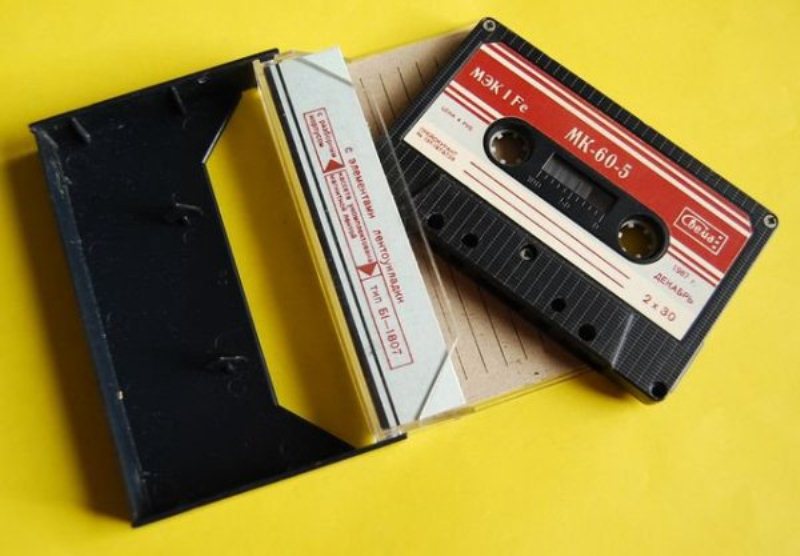
But the tape recorders really liked this film! They chewed it with great pleasure at every opportunity. This case was shrewdly provided for by cassette manufacturers, and therefore there were often no screws on the case. All imported cassettes were dismountable, that is, they were subject to minor repairs - for example, straightening the film. Many Soviet cassettes were glued, they honestly tried to accompany the playback with creaking and whistling, but, alas, they could not be repaired. If the film jammed in the cassette, the cassette could be thrown away immediately. Or better yet, don’t buy at all.
But did someone buy them? We bought it. Either they are completely unpretentious consumers, or they are completely miserly. In any case, at school, flashing an MK cassette meant dooming yourself to certain ridicule. However, given that now you can find memories of Soviet times, painted in the most rosy tones, I would not be surprised if someone writes that Soviet cassettes were significantly superior to their imported counterparts, worked great and generally still serve someone well . I wouldn't be at all surprised.





